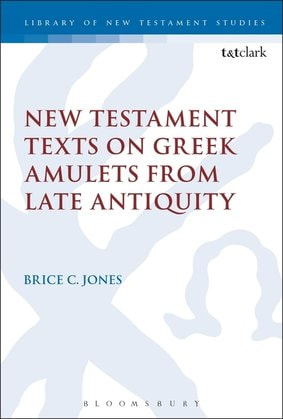|
In 1903, Grenfell and Hunt published volume three of the Oxyrhynchus Papyri series. Among the papyri included in that volume was P.Oxy. 560, a fragment of the Iliad that Grenfell and Hunt only described in a couple sentences in the back of the volume. It has never been fully published with a transcription, commentary, etc. until now: Andrzej T. Mironczuk (Warsaw, Poland) and myself have given this papyrus a full edition and it is forthcoming in ZPE 186, which will appear this summer. [Update: It has been published; see here.] This papyrus is interesting because it contains a new reading in Ψ 847. But it is especially interesting on account of the fact that it offers a completely unique feature: a vertical ruling-line running through the first letter of each verse in column II (not mentioned by Grenfell and Hunt). Yes, you read correctly: a vertical ruling-line. That is, the scribe has drawn a vertical line before copying his text in order to keep his left margin completely justified. This is, to my knowledge, the first occurrence of vertical ruling in any extant literary papyrus. Speaking of vertical ruling, E.G. Turner made the following statement: “Nor can I point to an example of vertical ruling...The only vertical ruling known to me (none of them illustrated) are those that occasionally serve a decorative purpose and were convenient in the school room” (GMAW, 6). However, we now have the first evidence of vertical ruling on a papyrus written by a professional scribe. Here is what it looks like followed by my commentary from the full edition: "A noteworthy feature of this papyrus is that the left margin of the second column is ruled vertically in black ink, creating strict justification. A close examination of the ductus suggests that the scribe is starting his initial stroke from that ruling line (drawn before the text was copied). Since the initial stroke of certain letters does not always begin at the farthest left point (thereby allowing some letters to cross the vertical ruling), “justification” here needs to be qualified on these grounds. The horizontal fibres of the papyrus run perpendicular to the ruling, which indicates that the direction of the writing climbs quickly (cf. the plate). As is well known, scribes of literary papyri rarely ruled their lines and margins, although W.A. Johnson has recently identified a number of examples of literary papyri from Oxyrhynchus containing vertical dots that were apparently used for column alignment. It is remarkable to find such a clear and unique example in our papyrus."
I discussed this vertical ruling-line with Prof. W.A. Johnson (mentioned in the commentary) and he described it as "a most interesting example!" This is a very special scribal phenomenon and I thought it was worth sharing here ahead of the publication of the article. Please be sure to check back here under the "Publications" tab of this website, where I will upload a PDF of the published article later this summer.
0 Comments
Your comment will be posted after it is approved.
Leave a Reply. |

Available at Amazon!
Archives
January 2021
Categories
All
|